

Early Organs up to 1926
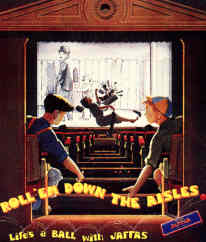 The vast majority of the organs installed in Australian theatre in the very
early days were of the photoplayer type, almost exclusively imported
from America. These instruments were manufactured by builders such
as Wurlitzer, Robert Morton (The American Fotoplayer Company),
Cremona, Seeburg and possibly others. An exception was the
Gulbransen Duo-Concerto Pipe Organ Orchestra Player Piano
Combined, a grandiose name for a small pit organ imported by E F
Wilks & Co. of Sydney, which was advertised in 1921-22. Only two of
these are known to have been installed. One was at Moss' Pictures,
Ballina, in northern New South Wales [Everyone's, 22 February, 1922], the other
at the Wonderview Theatre, Victor Harbour, South Australia, in January,
1924. [The Victor Harbour Times, 11 January, 1924, p. 1] Dodd & Sons
advertised photoplayers (but none is recorded as having been built by
them), and enlarged the Wurlitzer photoplayer at the Grand Theatre, Adelaide [Dodd Brochure, 1918].
There were no further Australian breakthroughs into the market. [Click here for more details about
photoplayers]
The vast majority of the organs installed in Australian theatre in the very
early days were of the photoplayer type, almost exclusively imported
from America. These instruments were manufactured by builders such
as Wurlitzer, Robert Morton (The American Fotoplayer Company),
Cremona, Seeburg and possibly others. An exception was the
Gulbransen Duo-Concerto Pipe Organ Orchestra Player Piano
Combined, a grandiose name for a small pit organ imported by E F
Wilks & Co. of Sydney, which was advertised in 1921-22. Only two of
these are known to have been installed. One was at Moss' Pictures,
Ballina, in northern New South Wales [Everyone's, 22 February, 1922], the other
at the Wonderview Theatre, Victor Harbour, South Australia, in January,
1924. [The Victor Harbour Times, 11 January, 1924, p. 1] Dodd & Sons
advertised photoplayers (but none is recorded as having been built by
them), and enlarged the Wurlitzer photoplayer at the Grand Theatre, Adelaide [Dodd Brochure, 1918].
There were no further Australian breakthroughs into the market. [Click here for more details about
photoplayers]
In the field of larger (unit) organs, Wurlitzer reigned supreme, unchallenged until 1928. The first true theatre-style unit organ reached Australia in 1917. It was the first Wurlitzer unit organ to be exported outside the continent of North America, and was a two-manual, seven rank, instrument (Opus 129) which was installed as a demonstration organ in the ballroom of the home of Wurlitzer's Australian agent, Mr W A Crowle, "Toftmonks", Elizabeth Bay, NSW.
Later that year, a two-manual, four rank, Style 1 Wurlitzer "Unit Orchestra" was installed in the Melba Theatre, Melbourne. This had a piano console, as did the slightly larger Wurlitzer installed the following year in the Strand Theatre, Hobart, of which the local newspaper reported: "its thunderous tones make an impression in the playing up of the action of the screen impossible to an instrument of smaller specifications" [Hobart Mercury, 16 November, 1918]. The Style 135, two-manual, four rank, Wurlitzer, at the Majestic Theatre, Melbourne, was next, in 1919.
Auditorium, Majestic, Melbourne 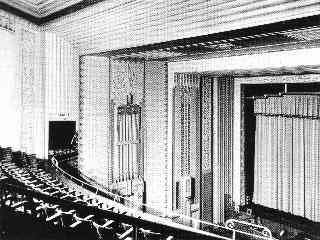
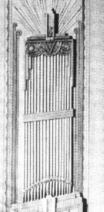 display pipes
display pipes
A detail enlargement showing the piano console, angled at the left of the pit
Grander things were, however, afoot, and the installation at the De Luxe Theatre, Melbourne, of "a cleverly constructed Orchestrelle... an Hope-Jones instrument, said to equal the best yet installed in Australia" [Everyone's, 9 August, 1922] was announced to the trade in August, 1922.
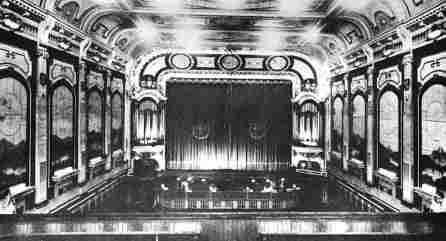
De Luxe Theatre, Melbourne 1922-1927
Two months earlier, Wm Hoggen, Paramount's Australian General Manager, had revealed that the Capitol Theatre, Melbourne, was under construction, "its internal appointments have been designed on a scale of lavishness hitherto unattempted in Australia" [Ibid., 7 June, 1922].
Union Theatres had, the previous year, announced plans to build "Million Dollar Theatres, capacity 3000-4000, cost £200,000 each" [Ten Years of Progress in the Motion Picture Industry of Australia, Union Theatres, Sydney, 1921] in the mainland capital cities. It was some years before Union commenced the construction of such large theatres. In the interim, Union opened luxury theatres in Sydney and Brisbane, both of which contained Wurlitzer organs. The New Lyric Wintergarden Theatre, Sydney, opened on 4 April, 1924, with a small four-rank instrument, rather grandly claimed to be "the most marvellous musical instrument ever constructed... its full tones are never heard; it is only the echo of the chords which majestically well out to the audience" [Everyone's, 9 April, 1924].
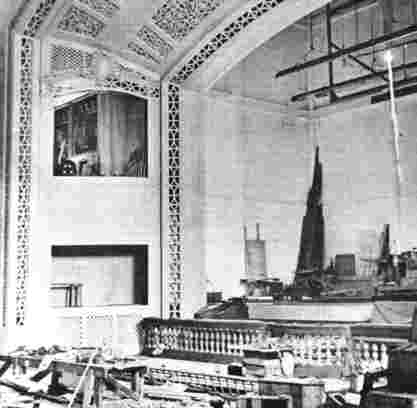 The Wintergarden Theatre, Brisbane,
opened on 1st August, 1924, and was
equipped with a two-manual, seven rank
Wurlitzer organ costing "in the region of
£10,000" [Everyone's, 23 April, 1924], later
amended to "considerably over
£6000" [Everyone's, 11 June, 1924]. This was
billed as "the biggest theatre organ in
Australia, costing £10,000 and
representing an orchestra of 100" [Brisbane
Courier, 31 July, 1924 (Wintergarden
advertisement)]. Of these claims, the first was
true, but only just, as the instrument was
only marginally larger than that at the De
Luxe Theatre, Melbourne, and then only
by virtue of having a separate echo
chamber for the Vox Humana, Chimes
and Chrysoglott, plus a few extra
couplers. The second claim, in view of the
figure already quoted to the trade (£6000),
is highly questionable (indeed most costs
of theatre organs in publicity material
were based not on actual costs but on managements' assessments of the gullibility of the general
public). The third claim is quite absurd.
The Wintergarden Theatre, Brisbane,
opened on 1st August, 1924, and was
equipped with a two-manual, seven rank
Wurlitzer organ costing "in the region of
£10,000" [Everyone's, 23 April, 1924], later
amended to "considerably over
£6000" [Everyone's, 11 June, 1924]. This was
billed as "the biggest theatre organ in
Australia, costing £10,000 and
representing an orchestra of 100" [Brisbane
Courier, 31 July, 1924 (Wintergarden
advertisement)]. Of these claims, the first was
true, but only just, as the instrument was
only marginally larger than that at the De
Luxe Theatre, Melbourne, and then only
by virtue of having a separate echo
chamber for the Vox Humana, Chimes
and Chrysoglott, plus a few extra
couplers. The second claim, in view of the
figure already quoted to the trade (£6000),
is highly questionable (indeed most costs
of theatre organs in publicity material
were based not on actual costs but on managements' assessments of the gullibility of the general
public). The third claim is quite absurd.
The Brisbane organ was played by Byron Hopper, an American organist. He was the first of a line of American theatre organists to come to Australia. The Wurlitzer Company used to press for new installations to be inaugurated by players fully experienced with their instruments, and would arrange for a suitable organist to be sent from America along with the organ, usually with a contract to play it for a year. Some returned to America on expiry of their contracts, others remained here for some years. This arrangement did not apply to the smallest organs, but presumably would have done at the De Luxe Theatre, Melbourne, had not the appointed organist, Horace Weber, already gained experience playing the Wurlitzer pit organ at the Grand Theatre, Adelaide.
During their stay in Australia, the American organists would train Australian organists, who often acted as their deputies, to take over from them when they left. They left a lasting influence in that Australian theatre organists have tended to follow the American, rather than the British, style of playing.
The Brisbane organ also possessed an automatic roll-playing unit, which was used to accompany the 11.00 a.m. and 5.00 p.m. film performances. Byron Hopper played solo for the 1.00 p.m. and 7.00 p.m. shows, and together with the orchestra for the "de luxe" performances at 2.30 p.m. and 8.00 p.m., which also included vaudeville "novelties" [Brisbane Courier, 31 July, 1924 (Wintergarden advertisement)].
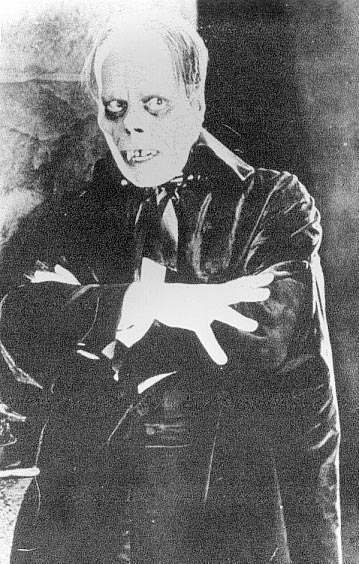
Lon Chaney in the "Phantom of the Opera"
 On 7 November, 1924, the
Capitol Theatre, Melbourne, one
of the world's truly original
examples of cinema
architecture, opened, with
Horace Weber at the console of
Australia's first truly mighty
Wurlitzer, a magnificent
3-manual, 15-rank, Style 260,
complete with thunderous 32-ft
Diaphones.
On 7 November, 1924, the
Capitol Theatre, Melbourne, one
of the world's truly original
examples of cinema
architecture, opened, with
Horace Weber at the console of
Australia's first truly mighty
Wurlitzer, a magnificent
3-manual, 15-rank, Style 260,
complete with thunderous 32-ft
Diaphones.
Then, on 22 November, the Prince Edward Theatre, Sydney, was opened (with a preview for the trade the previous night) under the sobriquet "The Theatre Beautiful". In it was installed a two-manual, ten rank, Wurlitzer, which was played by the quixotic American organist Eddie Horton, both solo and in concert with Will Pryor's orchestra.
In 1925, Hoyt's entered the "super cinema" arena with the Regent Theatre, South Yarra, Vic., which was to be the prototype for its chain of luxurious "Regent" theatres. This did not possess an organ, but was claimed to be the finest suburban theatre in Australia [Ross Thorne, Picture Palace Architecture in Australia, Melbourne, 1976].
As yet, "Mighty Wurlitzers" were not to be heard outside the city centres, but this changed when Eddie Horton opened a two-manual, ten-rank organ in Herbert Crispe's Arcadia Theatre, Chatswood, Sydney, on 8 February, 1926. Although this was a suburban theatre, it attracted considerable "carriage trade": "Our average parking of cars on a Saturday night is 80, and 20 or 30 during the week" [Everyone's, 24 February, 1926]. The younger patrons were not neglected, either:
"One innovation which synchronises with the opening of the organ and the engagement of Eddie Horton as organist promises to be particularly popular. It is no less than a children's party at the Saturday matinée. Mr Crispe gives the credit to the ubiquitous Eddie, and it promises to be wonderfully successful. At a packed house of youngsters, who had been specially invited to attend a children's matinée, Eddie suggested that, instead of the second feature, the kiddies might like to entertain themselves by performing on the stage... it went like a riot." [Everyone's, 24 February, 1926]
The industry was now really beginning to take note of the possibilities afforded by the theatre organ:
ORGAN INSTALLATIONS IN PICTURE THEATRES
"Many American motion picture theatres are solving the problem of how to secure good music by arranging for the installation of an organ in place of the usual orchestra, which in more cases than otherwise consists of a body of incompetents; and in this country also, much of similar nature exists.
"Organ manufacturing in the USA is a staple industry, and the installation of these instruments is but a minor detail. Here, in Australia, where such an innovation would mean a sum far in excess of what the article is valued at, none but the bigger class of picture theatre could entertain such a proposal.
"Of the value of organ music, when played by an expert, there is no question. Perfection in synchronisation is assured because there is no conflict in instrumentalists, no absurd searching for the cue on the part of two or three of the players, and no necessity for the operator to bother whether anybody but himself is playing correctly.
"The subject of organ accompaniment is one which is at present receiving the attention of many Australian exhibitors; and whilst one wishes to see every musician in employment, there is no doubt but what a good deal of inconsistent business is directly attributed to bad music, and it stands to reason that no theatre manager can tolerate, for all time, the very mediocre instrumentalists who so frequently constitute his orchestra.
"If any of the American organ-building companies were to set up a plant in Australia, we make bold to say that, in a comparatively brief space of time, they would, providing prices were reasonable, secure installations in almost every house of consequence." [Everyone's, 3 March, 1926]